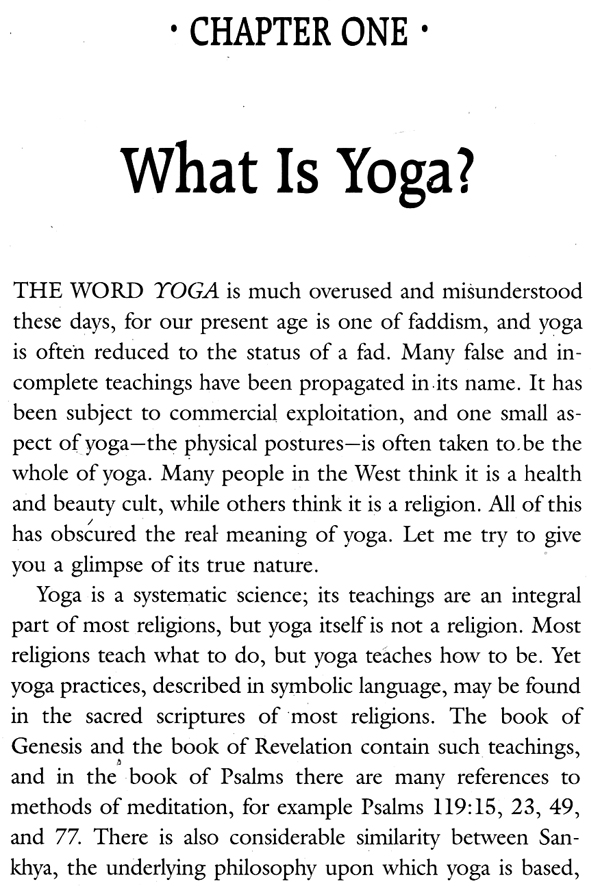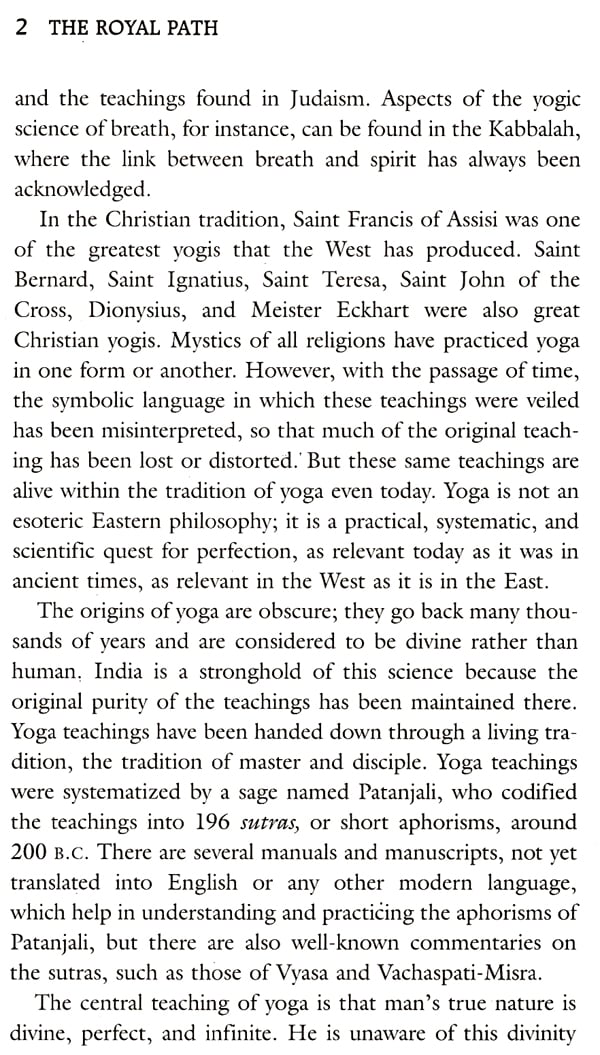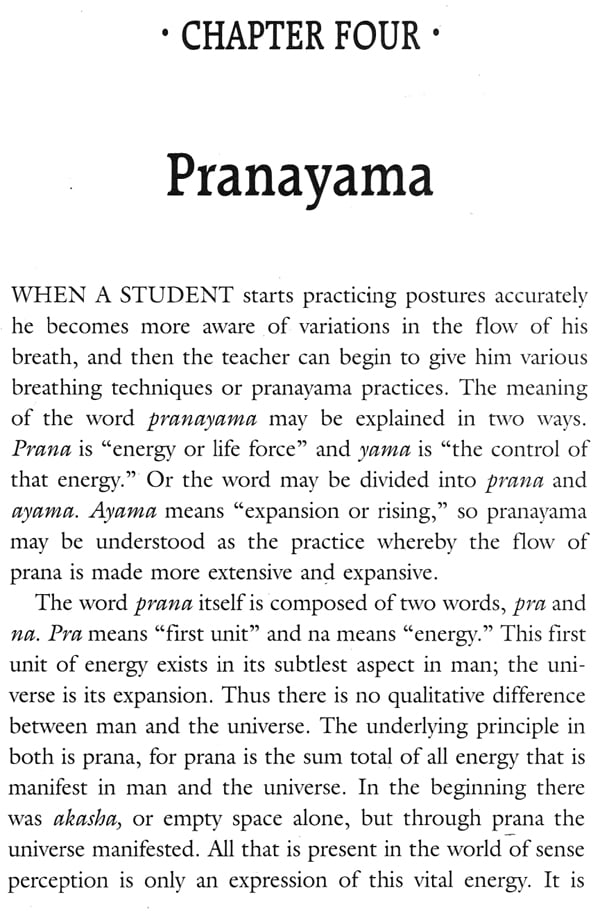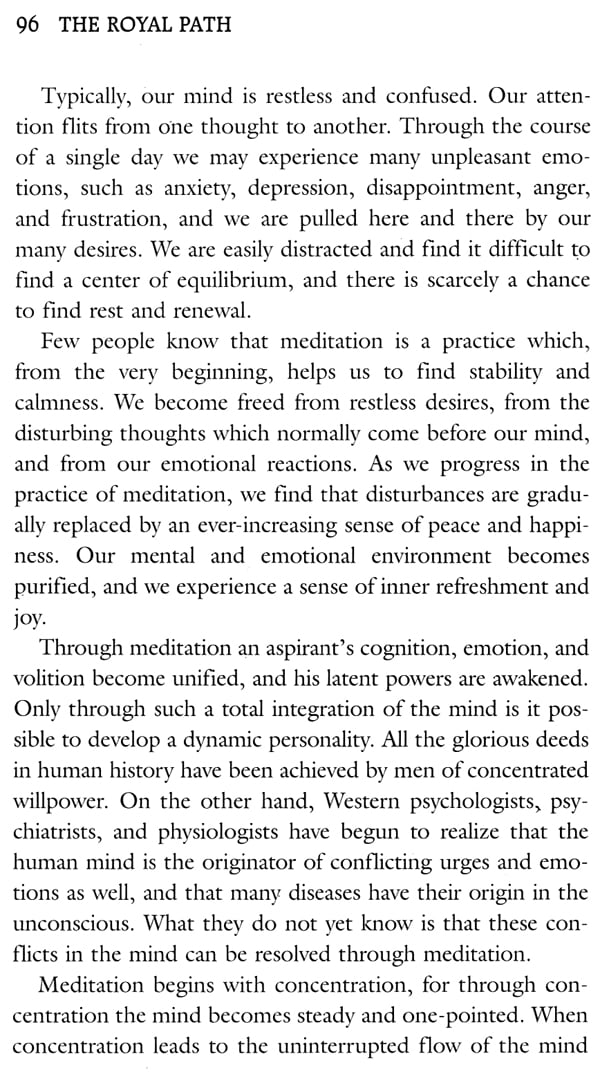
The Royal Path Practical Lessons on Yoga
Book Specification
| Item Code: | NAU602 |
| Author: | Swami Rama |
| Publisher: | The Himalayan Institute Press |
| Language: | English |
| ISBN: | 9780893891527 |
| Pages: | 157 (15 B/W Illustrations) |
| Cover: | PAPERBACK |
| Other Details | 8.50 X 5.50 inch |
| Weight | 200 gm |
Book Description
THE ROYAL PATH Practical Lessons on Yoga by Swami Rama Swami Rama was the first Himalayan yogi to demonstrate to the Western scientific community the astonishing level of self-mastery achieved by Indian adepts. In The Royal Path he introduces us to the ancient yogic techniques as they're actually practiced by those who attain the highest goal of life. In this step-by-step program, Swami Rama outlines the basic physical exercises, mental disciplines, and ethical commitments of Raja Yoga, the "Royal Path" to self-transformation and enlightenment. The Royal Path is an enduring classic, one of the clearest and most inspiring introduc-tions to yoga science available in English. Whether our goal is improved health, emotional balance, enhanced creativity, or spiritual exploration, the practices Swami Rama describes here hold the key. This book was originally published under the title Lectures on Yoga.
Swami Rama founded the Himalayan International Institute of Yoga Science and Philosophy, the Himalayan Institute Hospital Trust in India, and many centers throughout the world. A student of both Himalayan cave monasteries and European universities, he founded the Himalayan Institute to create a bridge between the ancient teachings of the East and modern scientific approaches of the West.
THERE ARE SEVEN ancient schools of Indian philosophy, ranging from a materialistic point of view similar in many respects to the current Western perspective, to its diametric opposite in which matter is considered a mere shadow of spirit. The Sankhya and Yoga schools take a point midway between these two extremes. Yoga deals with the experiential aspects of man's liberation from imperfection and suffering and offers practical methods for attaining this state. It uses the philosophical doctrines of Sankhya as its basis. Sankhya, which was founded by the sage Kapila around 600 B.C., admits of two ultimate realities: purusha, or cosmic consciousness, and prakriti, or elemental matter. The universe evolves out of matter, but is permeated by conscious-ness. Yoga is based on this scheme of evolution in man—the microcosm—but focuses on the practical aspects of involution, or the return of consciousness from identification with a material body and mind to ultimate consciousness. The main teaching of yoga is that man's innermost nature is divine but that he is unaware of this and mistakes himself for his body and intellect—both of which exist within the realm of matter and therefore are subject to decay and death. All of man's misery is a consequence of this false identification. Yoga leads one to the direct experience of his inner Self, his true identity. With such realization comes liberation from all human imperfections.
There are many paths to realization of the Self, just as the many spokes from the rim of a wheel meet at the hub. The word yoga is used in a generic sense for all these different paths. Some of them are: karma yoga, the path of action; bhakti yoga, the path of devotion; jnana yoga, the path of knowledge; kundalini yoga, the path of awakening latent spiritual power; and raja yoga, the royal path.
Raja yoga, which is the subject of this book, encompasses the teachings of. all these different paths. It concerns itself with three dimensions—the physical, the mental, and the spiritual. Through the methods of raja yoga one achieves mastery of all three realms and is led to full realization of the Self. The teachings of raja yoga go back many thousands of years. Little is known of their beginnings, but they are considered to be revealed teachings of divine origin. Somewhere around 200 B.C., they were systematized by the sage Patanjali, who organized the teachings. into 196 sutras, or aphorisms, called the Yoga Sutra. This text consists of four padas, or chapters. The first deals with samadhi, the state of self-realization, the second with the practical means by which this can be achieved, the third with the powers that manifest themselves in one who treads the path of yoga, while the last chapter deals with kaivalya, or liberation. Raja yoga, also known as ashtanga yoga or the eightfold path, outlines the practical means of achieving the state of self-realization. It is made up of eight angas, or limbs: yama, ntyama, asana, pranayama, pratyahara, dharana, dhyana, and samadhi. The first five are called the external limbs, the last three are internal.
**Contents and Sample Pages**












